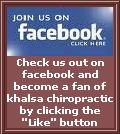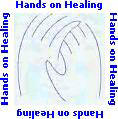

| Home | Dr. Mha Atma's Health Newsletter | Ideas for Good Health | Patient of the
week |
| >About |
| >Meet The Doctor |
| >Meet The Team |
| >Testimonials |
| >Hall of Fame |
| >Upcoming Schedules |
| >Contact Us |
| >New Patient Forms |
| >Exercises |
| >Links To Better Health |
| >Videos |
| >What is Chiropractic? |
| >Why go to Chiropractor? |
Healthy Life Newsletter March 2016
Vitamin D reduces diabetes risk
A study published in The Journal of Steroid Biochemistry and Molecular Biology January 2016 revealed a 60% reduction in the incidence of type 2 diabetes in a group of people with vitamin D blood levels averaging 41 ng/ml compared to a larger group with an average D level of 22 ng/ml. the introduction to the article states that "type 2 diabetes accounts for 90–95% of adult diabetes cases. The CDC expects the number of cases to double or triple in the next 40 years. Diabetes is the leading cause of kidney failure, non-traumatic lower limb amputations, and new cases of blindness among adults and is the seventh leading cause of death in the United States. The estimated total yearly cost of diabetes in the United States is $245 billion " Note from Dr. Mha Atma: The best way to prevent or even reverse type 2 diabetes is with a healthy anti-inflammation diet and regular exercise. But taking enough vitamin D to get your blood levels above 40 (usually requiring 5,000 IU or more daily) is an easy and powerful way to improve your health and reduce diabetes risk!
doi:10.1016/j.jsbmb.2015.06.013
---------------------------
You Deserve a (Micro)Break
By Paul Hooper, DC, MPH, MS
Microbreaks are short breaks that are taken frequently throughout the workday. Properly used, they can reduce the strain on anatomical structures. They also have been shown to positively affect productivity.1 Obviously, not all jobs or tasks are amenable to the use of microbreaks. But for those that are, they make a great deal of sense.
Microbreak Basics
A microbreak is a break that lasts anywhere from 30 seconds to as long as 5 minutes, and is meant to be taken frequently – as often as every 10 minutes. Evidence suggests microbreaks actually reduce muscle fatigue by as much as 20-50 percent in an eight-hour day.2
It's important to contrast the microbreak with the traditional break at work. As an example, workers often begin their shift at 8 a.m. Around 10 a.m., they take a scheduled 15-minute break, after which they return to work. At noon or so, they get another break for lunch (also scheduled). They return to their jobs at 12:30 p.m., with another 15-minute break scheduled at some point in the afternoon.
To illustrate the microbreak, I'll use the following example. When someone uses a manual typewriter (remember those?), regardless of how fast a typist they are, at some point the sheet of paper runs out. The typist must stop the act of typing long enough to put in a new sheet. While this only takes a few seconds, it forces the typist to take a microbreak.
Contrast this to someone using a modern computer, who thus has a never-ending sheet of paper and can type for an indefinite period of time. With that in mind, it's no real surprise that conditions such as carpal tunnel syndrome are more common in computer users.
Read the rest of this article, inclduing details on how to do it!
http://www.toyourhealth.com/mpacms/tyh/article.php?id=2221
---------------------------
Steroids for Sciatica: More Trouble Than They're Worth
By Deborah Pate, DC, DACBR
Use of epidural steroid injections has increased dramatically in recent years, despite the fact that studies have failed to demonstrate evidence this procedure is clinically helpful (while other studies suggest it may actually be dangerous).
Considering that lack of evidence – not to mention the terrible 2012 outbreak of fungal meningitis / infections caused by contaminated vials used for epidural corticosteroid injections – it is prudent at least to take a critical look at this procedure as it relates to sciatica or pain affecting the sciatic nerve, which extends from the lower back down the back of each leg.
Small Relief, Big Potential Side Effects
In a recent meta-analysis of 23 randomized trials involving more than 2,000 patients in which epidural steroid injections were compared with placebo for sciatica, epidural steroid injections produced small, statistically insignificant short-term improvements in leg pain and disability (but not less back pain) compared to placebo. This improvement also was only over a short period of time – two weeks to three months. Beyond 12 months, there was no significant difference between groups.
Besides infection, there are other side effects associated with epidural steroid injections: bleeding, nerve damage and dural puncture. Then there are side effects associated with the steroid medication, which include the following: a transient decrease in immunity, high blood sugar, stomach ulcers, cataracts and increased risk of fracture.
http://www.toyourhealth.com/mpacms/tyh/article.php?id=1968
---------------------------
Chiropractic Care for Common Sports Injuries
By Jasper Sidhu, BSc, DC
Have you ever had a sports injury that limited you from playing your favorite sport? If so, you aren't alone. Whether you are a weekend sports enthusiast or an athlete, getting back to playing again is the most important thing.
That's why an injury can take time to heal and really frustrate us. We want to be back playing yesterday. That's why chiropractic care is so important. Getting your injury assessed and treatment will not only get you back on your feet faster, but also screen out any bad habits that can lead to further injury. Let's look at some of the most common sports injuries out there, and review what you can do to get it better.
Injury: Hamstring Strain
Treatment:
Follow RICE principle if injury happened within last 48 hours
RICE: (Rest, Ice, Compression, Elevation)
Electrotherapy, Ultrasound for swelling control
Stretching for increasing flexibility
Chiropractic adjustments to address joint tightness
Muscle tissue work to break up scar tissue
Active exercise to get back to full strength and prevent further injury
Key points to remember:
Hamstring pulls and strains are most commonly due to lack of flexibility and adequate warm up before beginning your sport. Apart from treating the area of injury, your Chiropractor will examine to see if there's any muscular imbalances. Having a tight thigh and weak hamstrings will lead to recurring injuries unless you get your muscles and joint motion back to normal.
Injury: Low back strain
Treatment:
Chiropractic adjustments to increase range of motion and decrease pain
Low back stretching exercises
Strengthening and core training
Key points to remember:
Majority of sports injuries to the back involve sudden twisting motions. Core strength is one of the most important goals you need to achieve if you are going to continue playing. Avoid any forward bending movements in sports, since this puts a lot of stresses to the spine and can increase risk of injury, especially if you are being hit.
http://www.toyourhealth.com/mpacms/tyh/article.php?id=1523
---------------------------
Still Taking Aspirin for Your Heart? You Better See This…
http://www.lifecarechiropractic.com/blog/aspirin-for-heart-macular-degeneration/
By James Bogash, DC
We love to shoot for the low hanging fruit when it comes to chronic disease management and prevention. Don’t avoid processed foods high in sodium–just by the same junk in a “low sodium” version. Don’t exercise too hard–a light 30 minute walk around the block is enough. Don’t avoid refined carbohydrates–just eat more whole grains.
You get the idea.
We seem fixated on the idea of making “easy” to make changes that have a really small impact on chronic disease. Can’t lower your cholesterol through lifestyle? This class of drugs will lower your risk of heart attacks by 1%. High blood pressure? Forget lifestyle, just take a beta blocker–you won’t lower your risk of stroke (actually increases risk) but you’ll have a better looking blood pressure to tell your friends.
Just how good is aspirin at preventing heart attacks? Treat 1,000 people with aspirin for 5 years and you prevent 2.9 heart attacks, although 2.8 of you will suffer a major bleeding episode as a result, leading to a net benefit of .1 person for every 1,000 treated. Or, for those of you who haven’t had a math class for several decades, you have to treat 10,000 people for 5 years to prevent a single heart attack.
Sounds like the only person the recommendations to take aspirin for your heart benefitted was Bayer.
So it’s a little money out of my pocket. At least there are no dangers associated with aspirin use. Unless, of course, you count these:
· Increased risk of pancreatic cancer
· Aspirin use may make you more susceptible to gluten allergies.
· Increased risk of esophageal lesions and cancer
The list is probably longer, but these are a few of the studies I’ve reviewed over the years.
Thanks to this particular study, now we can add a new one.
Neovascular age-related macular degeneration. Almost 246% higher risk in regular users of aspirin.
So, if you’re one of the lucky 1 in 10,000 that avoided a heart attack by regular use of aspirin, then congratulations. If however, you’re in the group with everyone else, just hope that your eyesight is still intact as a result of taking a daily aspirin for a perceived lowered risk of having a heart attack.
If you are still taking aspirin to lower your risk of having a heart attack, is this choice because your doctor has recommended it, or because society general thinks that this will protect your heart?
---------------------------
http://www.toyourhealth.com/mpacms/tyh/article.php?id=2225
Dying the Right Way
By Editorial Staff
Imagine you're dying of a chronic disease – or even of natural causes (old age). How much effort – and time, and money, and emotion – should you, your loved ones and your health care team exert to prolong your life? It's an age-old question that's coming to the forefront of discussion with out-of-control health care costs and an emphasis on preserving life (even for a few days or weeks) no matter the costs.
It turns out many doctors actually have a different view; a perspective that suggests drugs and medical procedures that prolong life for a short time aren't the only answer. Consider a recent report published in the Journal of the American Medical Association that revealed doctors are less likely to die in a hospital, less likely to undergo surgery at the end of their lives and less likely to be admitted to intensive care compared to the general population. (What's more, a 2014 survey found nearly 90 percent of physicians surveyed chose "do not resuscitate" as their advanced directive.)
We're living longer and surviving more health scares, even in old age, due to medical technology. But is that always the right choice? If anything, these physician surveys make you ponder all that time, effort, money and emotion often exerted to prolong a life that's taken it's natural course. More important, perhaps, is the need to ensure you live a full, healthy, happy life that's low on stress, poor nutrition, sedentary behavior and medical interventions – and high on healthy eating, physical activity and preventive care. Talk to your doctor for more information.

